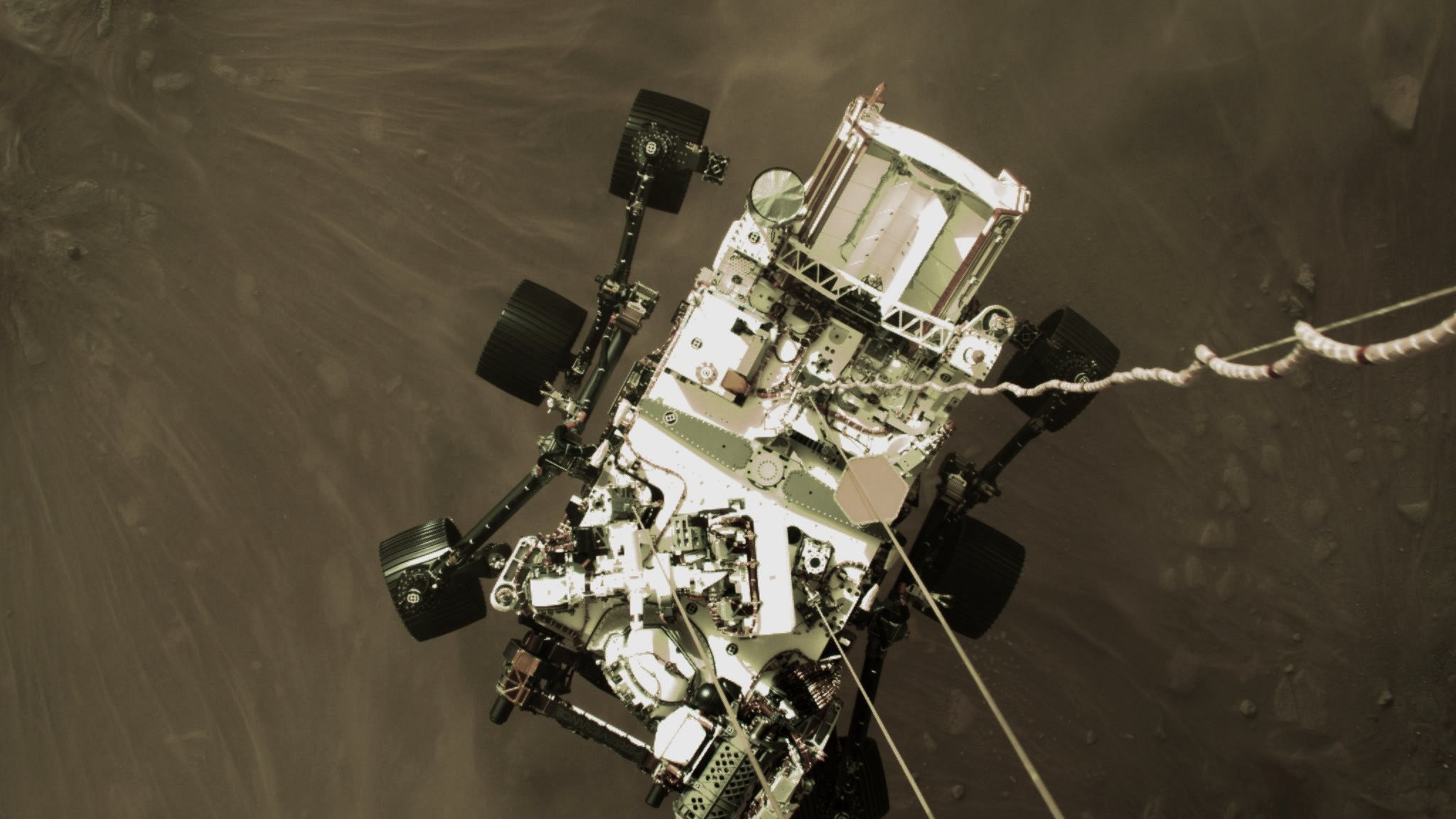Nasa’s Mars rover Perseverance, the most advanced astrobiology lab ever sent to another world, streaked through the Martian atmosphere on Thursday and landed safely inside a vast crater, the first stop on a search for traces of ancient microbial life on the Red Planet.
Mission managers at Nasa’s Jet Propulsion Laboratory (JPL) near Los Angeles burst into applause, cheers and fist-bumps as radio beacons signalled that the rover had survived its perilous descent and arrived as planned on the floor of Jezero Crater, site of a long-vanished Martian lake bed.
The six-wheeled vehicle came to rest about 2km from towering cliffs at the foot of a remnant fan-shaped river delta etched into a corner of the crater billions of years ago and considered a prime spot for geo-biological study on Mars. “Touchdown confirmed,” Swati Mohan, the lead guidance and operations specialist announced from the control room. “Perseverance safely on the surface of Mars.”
The robotic vehicle sailed through space for nearly seven months, covering 472 million km before piercing the Martian atmosphere at 19,000 km per hour to begin its descent to the planet’s surface.
Moments after touchdown, Perseverance beamed back its first black-and-white images from the Martian
surface, one of them showing the rover’s shadow cast on the desolate, rocky landing site.
Because it takes radio waves 11 minutes to travel from Mars to Earth, the SUV-sized rover had already reached Martian soil by the time its arrival was confirmed by signals relayed to Earth from one of several satellites orbiting Mars.










